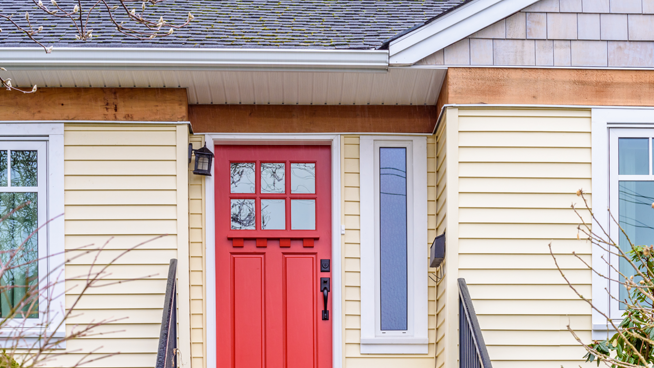
From The Detroit News | By Ken Calverley and Chuck Breidenstein
DETROIT, April 18, 2024 ~
How often do we drive by a magnificent older home and marvel at its timeless beauty?
So many of these were built to a very high standard, using the best materials and processes available at the time.
Unfortunately, some of these products have become liabilities that future owners have to deal with.
One example most people are very familiar with is asbestos. Once touted as a miracle product, it was used in thousands of building materials, from flooring and siding to various types of insulation, right up until the turn of the century.
PODCAST:
April 21, 2024 ~ Chuck “The Inside Guy” Breidenstein and Ken “The Outside Guy” Calverly offer the knowledge and resources you need to make the home of your dreams a reality.
(CONTINUED)
It became a liability in homes when it became friable, or dust-like, and, when ingested, could lead to serious health issues.
There are still many homes that are sided in this very durable product, have solid 9-inch floor tiles containing asbestos, or even asbestos containing vermiculite insulation laying on the attic ceiling. None of this material poses a threat unless it becomes degraded and is absorbed into the body.
And there is the rub.
Because of the potential for developing issues, home buyers should be aware of products or materials that may cause them to incur future expenses or even physical harm.
Products such aluminum wiring that was widely used through the ’70s and ’80s or the transite ductwork and gas vents that was common through the ’50s and ‘sixties ’60s can be a pricey replacement as we upgrade our homes.
Electrical items like aluminum wiring require a trusted professional, since the wire itself was not so much an issue as the connections that may work loose.
Other potential electrical concerns include knob and tube wiring, Stab-Lok panels that potentially caused fires, and ungrounded receptacles that were commonly installed up to the early ’60s.
The loose-fill insulation we call vermiculite was installed up until the late ’80s. A high percentage of it was produced under the name zonolite and contained asbestos.
It was generally installed in attics, but some sidewall installations were also completed.
Lead piping, as well as galvanized steel pipes, installed up to the early 1960s, can also become an issue. Although many cities have become pro-active in replacing lead water mains, steel water lines corrode over time and can severely restrict flow.
A qualified plumbing contractor is required to correct this issue, normally by replacing the pipes and mains with noncorrosive materials.
Another possible plumbing item to consider is sewer backups, particularly in older parts of a city where storm and sewer water systems may be combined and overloaded in heavy rain events.
This can cause backups into homes that are not equipped with backflow valves to prevent such an intrusion.
A common practice decades ago, when basements were not considered for future finished space, was to bury all construction debris in and around the foundation. This included bricks and wood scraps and the occasional oil tank.
Even basement entrances for some homes were from the outside through a “Bilco” type door instead of an interior stairway.
Any exterior sub-grade modifications should consider these items while knowing a professional is required to remove that old furnace fuel tank.
Exterior masonry should be examined to discover if the brick is a hard-baked type with tooled, concave joints or a soft, sand-lime brick with raked joints that contribute to water intrusion and degradation.
Chimneys are a concern, particularly when they are constructed of sand lime bricks and plaster coated. It is predictable that, over time, the chimney cap will allow water intrusion between plaster and brick and the resulting damage can force expensive repairs.
Old fireplace ash dumps can become repositories for seasonal water, and ill-designed chimney footings may allow the entire masonry mass to tilt away from the home.
The intent here is not to dissuade buyers, but to put them on notice. Part of your pre-purchase due diligence includes a thorough examination and a written report by a qualified home inspector.
Something as seemingly simple as replacing a unique stairway spindle or section of wrought-iron railing can be a complex undertaking in an older home.
Old homes can be treasures to be adopted and enjoyed as long as one understands the needed care and concerns on the front side of the transaction.
Part of that responsibility involves familiarity with a cadre of professionals like those you can find every day at InsideOutsideGuys.com.
**
For more advice, listen to “The Inside Outside Guys” every Saturday and Sunday on 760 WJR from 10 a.m. to noon or contact them at InsideOutsideGuys.com.
MORE FROM THE INSIDE OUTSIDE GUYS:




